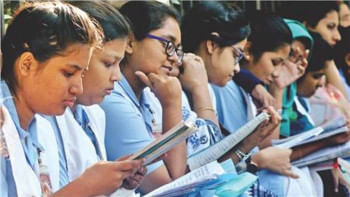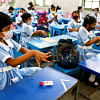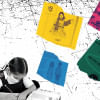National assessment of students give ominous signals

We are worried by the latest National Student Assessment 2022, by the Directorate of Primary Education and Unicef, which exposes the deep fractures in our primary education system. The assessment found that over 60 percent of third graders and 70 percent of fifth graders do not have the proficiency in maths appropriate for their grades. Shockingly, 51 percent of the third graders and 50 percent of the fifth graders lack grade-level competence in Bangla. For years, education experts and stakeholders have been screaming themselves hoarse over how the primary school system needs a major overhaul. Even though many of the weaknesses have been identified, precious little has been done to address them in a comprehensive way over the decades.
The result is that the very foundation of education is weak. This has a cumulative effect as these students go to secondary school without the basic competency needed to understand and absorb the curricula in higher grades. We can only imagine the long-term consequences of such a flawed education system.
Unfortunately, the widely known problems – lack of proper classroom teaching, high student-teacher ratio, poor student-teacher interaction, inadequate infrastructure, and fund shortage – have not been solved for decades. The latest education budget, far from reaching the Unesco recommendation of 4 to 6 percent percent of the GDP, was only 1.76 percent of the GDP, the lowest in 15 years.
How does this show the government's commitment to invest in education to create the "smart citizens" of tomorrow? Twelve percent of Class 3 and 8 percent of Class 5 students have advanced proficiency in Bangla. In maths, the percentages are 11 and 9 percent, respectively. What will happen to the rest who simply have not been able to learn what they should have through no fault of their own?
What is most telling is the discrepancy in academic performance across divisions as well as geographical areas. Students in Dhaka and Mymensingh, for instance, performed better compared to Sylhet, while children in remote places and islands did poorly. This should give the government a good indicator as to which areas must be prioritised.
In the last decade or so the number of students enrolled has increased but the quality of education remains below par. The government must take immediate measures to revamp the education system. This will include increasing the education budget, employing quality teachers, providing them with proper training and salaries, and making sure classrooms are smaller so that teachers can pay attention to students as well as redesign the curriculum and teaching methods so that students learn how to be creative and independent thinkers. As Bangladesh approaches LDC graduation, there will be a huge demand for a skilled workforce. Unless the quality of education is dramatically upgraded, it will not be possible to develop such skilled human resources.

 For all latest news, follow The Daily Star's Google News channel.
For all latest news, follow The Daily Star's Google News channel. 









Comments